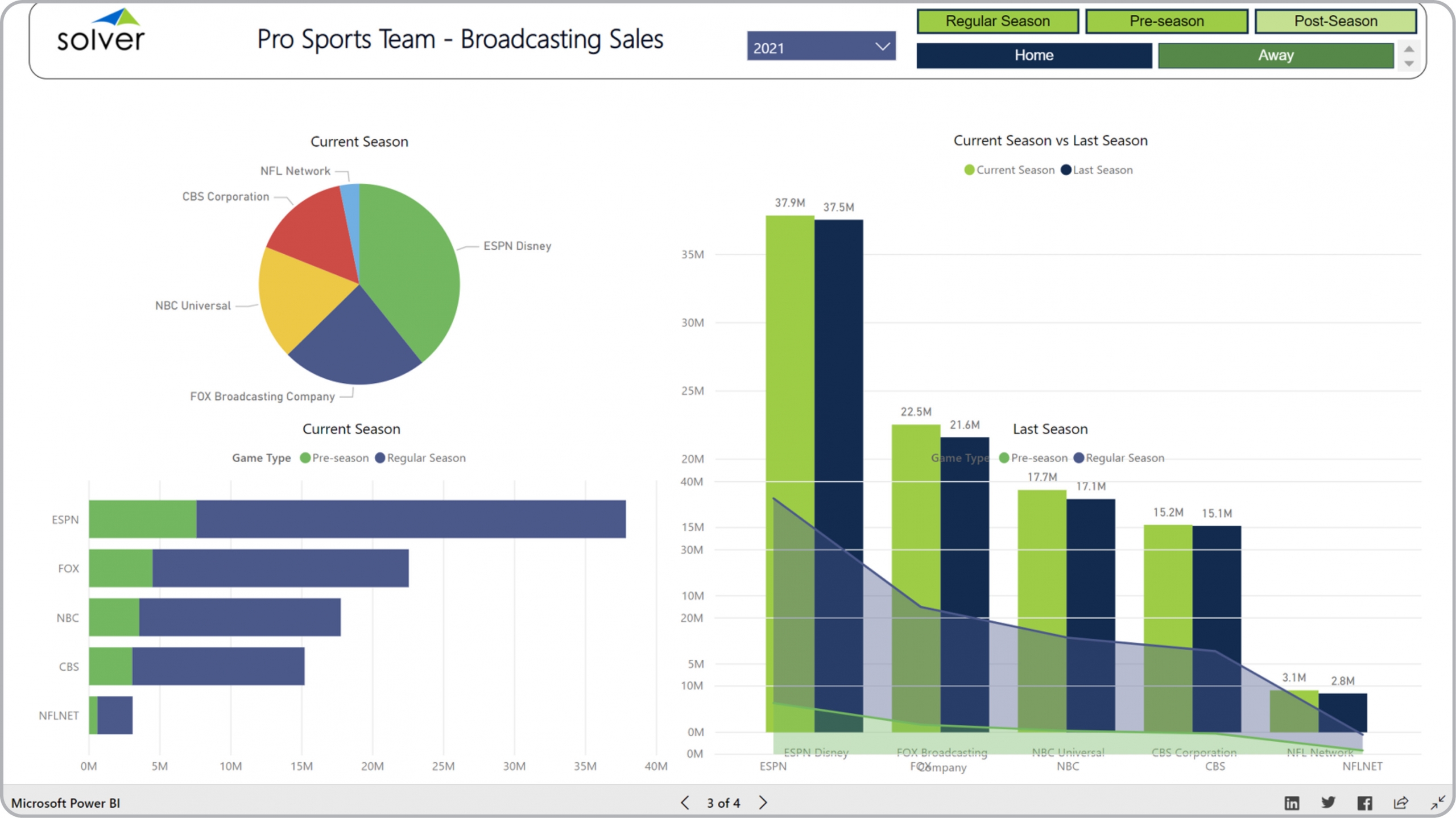Written by Nils R. | Apr 25, 2021 7:00:00 AM
What is a
Broadcasting Sales Dashboard
? Broadcasting Sales Dashboards are considered media revenue analysis tools and are used by CFOs and Sales Executives to track sales by broadcaster as well as total broadcast revenues. Some of the main functionality in this type of dashboard is that it provides analysis from three different perspectives: 1) Current season sales by broadcaster, 2) Regular versus pre-season sales - ranked by broadcaster, 3) Current season versus last season sales - ranked by broadcaster. Using the filters on the top of the screen, the user can filter by year, regular season/pre-season/Post-season as well as Home/Away games. You find an example of this type of dashboard below.
Purpose of
Broadcasting Sales Dashboards Professional sports organizations use Broadcasting Sales Dashboards to easily understand and compare the revenues they get from different broadcast partners. When used as part of good business practices in Financial Planning & Analysis (FP&A) and Sales departments, an organization can improve its revenues and related media partner strategies, and it can reduce the chances that any broadcast sales issues goes undetected for longer than necessary.
Example of a
Broadcasting Sales Dashboard Here is an example of a Broadcast Sales Dashboard with comparison and ranking of revenue from each company. [caption id="" align="alignnone" width="2560"]


- Native ERP report writers and query tools
- Spreadsheets (for example Microsoft Excel)
- Corporate Performance Management (CPM) tools (for example Solver)
- Dashboards (for example Microsoft Power BI and Tableau)
- View 100’s of reporting, consolidations, planning, budgeting, forecasting and dashboard examples here
- View a Professional Sports Team white paper and other industry-specific information here
- See how reports are designed in a modern report writer using a cloud-connected Excel add-in writer
- Discover how the Solver CPM solution delivers financial and operational reporting
- Discover how the Solver CPM solution delivers planning, budgeting and forecasting
- Watch demo videos of reporting, planning and dashboards
